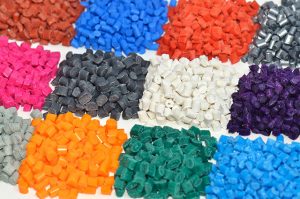 Per- and polyfluoroalkyl substances (PFAS) are a group of man-made chemicals that includes PFOA, PFOS, GenX, and many other chemicals. PFAS have been manufactured and used in a variety of industries around the globe, including in the United States since the 1940s. These chemicals are used to make fluoropolymer coatings and products that resist heat, oil, stains, grease, and water. Fluoropolymer coatings are blends of resins and lubricants used in products such as water-repellent clothing, furniture, adhesives, paint and varnish, food packaging, heat-resistant non-stick cooking surfaces and insulation of electrical wires. PFAS can also be found in food, drinking water, and living organisms.
Per- and polyfluoroalkyl substances (PFAS) are a group of man-made chemicals that includes PFOA, PFOS, GenX, and many other chemicals. PFAS have been manufactured and used in a variety of industries around the globe, including in the United States since the 1940s. These chemicals are used to make fluoropolymer coatings and products that resist heat, oil, stains, grease, and water. Fluoropolymer coatings are blends of resins and lubricants used in products such as water-repellent clothing, furniture, adhesives, paint and varnish, food packaging, heat-resistant non-stick cooking surfaces and insulation of electrical wires. PFAS can also be found in food, drinking water, and living organisms.

Certain PFAS chemicals are no longer manufactured in the United States as a result of phase outs including the PFOA Stewardship Program in which eight major chemical manufacturers agreed to eliminate the use of PFOA and PFOA-related chemicals in their products and as emissions from their facilities. Although PFOA and PFOS are no longer manufactured in the United States, they are still produced internationally and can be imported into the United States in consumer goods such as carpet, leather and apparel, textiles, paper and packaging, coatings, rubber and plastics.
The Environmental Protection Agency’s (EPA) has asked for public comment on the 2020 National Pollutant Discharge Elimination System (NPDES) general permit for stormwater discharges associated with industrial activity. Colorado, Massachusetts, and New Mexico submitted comments requesting EPA require industrial facilities (permitted) to monitor storm-water discharge from their sites for PFAS as well as implement procedures and practices to prevent or minimize PFAS from entering stormwater from their facilities.
 Some states have taken additional steps, for example (New York State) 6 NYCRR Part 597.4(a)(3) allows entities storing firefighting foam to use the foam to fight fires, but not for training or other purposes, on or before April 25, 2017 while they determine if using the foam would cause a release of one pound or more of PFOA-acid, PFOA-salt, PFOS-acid, or PFOS-salt. Foam that is prohibited for use after April 25, 2017 should be safely disposed in accordance with federal, state, and local requirements. The New York State Department of Environmental Conservation (NYSDEC)’s recommended method of disposal is described in the fact sheet on Storage and Use of Firefighting Foams. Replacement foam may not contain a hazardous substance at a concentration that would result in the release of the reportable quantity (one pound) or more when used as a firefighting foam.
Some states have taken additional steps, for example (New York State) 6 NYCRR Part 597.4(a)(3) allows entities storing firefighting foam to use the foam to fight fires, but not for training or other purposes, on or before April 25, 2017 while they determine if using the foam would cause a release of one pound or more of PFOA-acid, PFOA-salt, PFOS-acid, or PFOS-salt. Foam that is prohibited for use after April 25, 2017 should be safely disposed in accordance with federal, state, and local requirements. The New York State Department of Environmental Conservation (NYSDEC)’s recommended method of disposal is described in the fact sheet on Storage and Use of Firefighting Foams. Replacement foam may not contain a hazardous substance at a concentration that would result in the release of the reportable quantity (one pound) or more when used as a firefighting foam.
The NYSDEC issued a guidelines for sampling and analysis of PFAS. The guidance provides sampling protocols for PFAS in soils, sediments, solids, monitoring wells, surface water, private water supply wells, and in fish. Last year the NYSDEC issued broad guidance requiring all sites in the state cleanup program to sample for PFAS in soil, groundwater, surface water, and sediment. In addition, all future work plans for investigation and remediation at sites in the state cleanup program must now include these new PFAS sampling and analysis procedures. PFAS analysis must now be included whenever samples are being analyzed for the standard Target Analyte List/Target Compound List.
Learn More about PFAS below:
